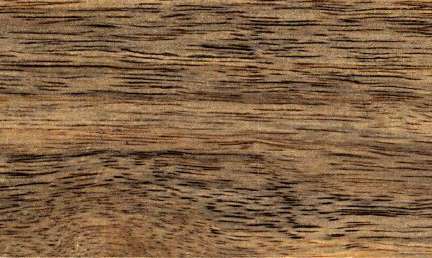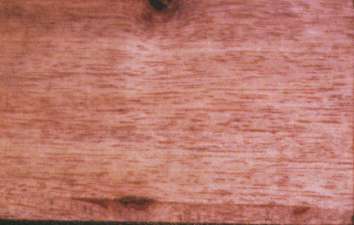 
Char (Buchanania latifolia)
Family: Anacardiaceae
Common names: Achar, Aima, Baruda, Buchanania, Carai, Char, Chara, Chara-chettu, Charoli, Charu, Charwari, Chinna moral, Chirauli, Chirka, Chiroli, Chironji, Herka, Jaru mamidi, Jvaramamidi, Kat maa, Katbhilawa, Katma, Kolegeru, Lonbo, Lonepomoa, Lonpo, Lunbo, Maihakhpu, Moda mavu, Moongapezhu, Mora, Mora kangi, Moral, Morala, Morli, Morlimorlu banka, Morlu chettu, Munga pera, Mungapera, Muria, Murkalu, Nurkal, Nurkul, Nuruvei, Nuskul, Parop, Paruppusedi, Payala, Peea, Peirah, Perna, Perua, Pial, Piar, Piyal, Pyal, Sara, Sarai, Saraipparuppu, Saraka, Sareka, Sir, Taro, Tarop, Tarum, Thitsibo
Distributed in: Burma, India, Myanmar, Nepal (Oceania and S.E. Asia)
Distribution overview: India, Myanmar, Laos, Thailand, Vietnam, Yunnan, primarily in dry forests. Fruit is black, 1-seeded, kernels pear-shaped, 1 cm long, oily, edible, delicious with a combination of almond and pistachio flavours - known as "almondettes" occasionally imported into Europe, eaten raw or roasted or in sweetmeats, pounded and dried fruits made into bread in India, seed oil a substitute for almond or olive oil; bark and fruit yield a varnish; bark used in tanning; browsed; gum used in traditional medicine against leprosy; wood for fuel; trees grown for erosion control.
Common uses: Agricultural implements, Boxes and crates, Building materials, Charcoal, Concealed parts (Furniture), Desks, Dining-room furniture, Door, Fine furniture, Fixtures, Food containers, Fuelwood, Furniture , Furniture components, Furniture squares or stock, Furniture, Heavy construction, Interior construction, Joinery, Light construction, Matchboxes, Matches, Millwork, Mine timbers, Moldings, Packing cases, Roofing, Rustic furniture, Stools, Tables , Trimming, Utility furniture, Wainscotting
Environment profile: Status has not been officially assessed
Tree size: Tree height is 10-20 m
Colors: the heart isWhite to cream, Yellowand the sapwoodWhite, Yellow.The grain isStraight, the textureFineand the lusterSlightly lustrous
Natural durability: Very little natural resistance, Will deteriorate rapidly in wet conditions without chemical protection
Kiln Drying Rate: Naturally dries slowly
Drying Defects: Checking, Splitting
Ease of Drying: Thick Stock Requires Care
Comments: General finishing qualities are rated as satisfactory Generally very soft, moderately heavy, poor quality
Blunting Effect: Moderate
Boring: Poor to very poor results
Carving: Poor to Very Poor Results
Cutting Resistance: Easy to saw
Gluing: Fairly Easy to Very Easy
Mortising: Poor to Very Poor
Moulding: Poor to Very Poor
Movement in Service: Poor to Very Poor
Nailing: Pre-Boring Recommended, Very Good to Excellent
Planing: Poor to Very Poor
Response to hand tools: Fairly Difficult to Difficult to Work
Routing recessing: Poor to Very Poor Results
Sanding: Fairly Easy to Very Easy
Steam bending: Fair to Good Results
Screwing: Pre-boring recommended, Very Good to Excellent Results; Turning: Very Good to Excellent Results
Polishing: Very Good to Excellent; Staining: Very Good to Excellent;
- Numerical data Metric
- Numerical data English
- Strength properties
- References
 |
 |
 |
 |
| Item |
Green |
Dry |
Metric |
| Specific Gravity |
0,41 |
0,51 |
|
| Density |
|
624 |
kg/m3 |
| Bending Strength |
380 |
613 |
kg/cm2 |
| Crushing Strength |
17 |
39 |
kg/cm2 |
| Hardness |
|
258 |
kg |
| Impact Strength |
40 |
40 |
cm |
| Shearing Strength |
|
71 |
kg/cm2 |
| Stiffness |
71 |
90 |
1000 kg/cm2 |
| Tangential Shrinkage |
7 |
|
% |
| Radial Shrinkage |
4 |
|
% |
| Weight |
608 |
592 |
kg/m3 |
| Maximum Load |
0,21 |
0,28 |
cm-kg/cm3 |
| Toughness |
|
|
cm-kg |
| Static Bending |
187 |
318 |
kg/cm2 |
|
 |  |  |  | | Item | Green | Dry | English | | Bending Strength | 5408 | 8732 | psi | | Crushing Strength | 255 | 568 | psi | | Density | | 39 | lbs/ft3 | | Hardness | | 569 | lbs | | Impact Strength | 16 | 16 | inches | | Maximum Crushing Strength | 2161 | 4213 | psi | | Shearing Strength | | 1022 | psi | | Static Bending | 2666 | 4537 | psi | | Stiffness | 1015 | 1290 | 1000 psi | | Work to Maximum Load | 3 | 4 | inch-lbs/in3 | | Specific Gravity | 0.41 | 0.51 | | | Weight | 38 | 37 | lbs/ft3 | | Radial Shrinkage | 4 | | % | | Tangential Shrinkage | 7 | | % | | Volumetric Shrinkage | 11 | | % | |
Bending strength (MOR) = low
Max. crushing strength = low
Density (dry weight) = 31-37 lbs/cu. ft.
Toughness-Hammer drop (Impact Strength) = very low
Shrinkage, Tangential = moderate
Shrinkage, Radial = moderate
Modulus of Elasticity (stiffness) = very low
Modulus of Elasticity (stiffness) = low
Shrinkage, Volumetric = moderate
Shearing strength (parallel to grain) = very low
Vulnerable to denting and scratching
Vulnerable to denting and marring
Heavy
Hardness (side grain) = very soft
Hardness (side grain) = soft
Density = high
Compression strength (parallel to grain) = low
Bourdillon, T.F.,1908,The Forest Trees of Travancore,Travancore Government PressGamble, J.S.,1902,A Manual of Indian Timbers,Sampson Low, Marston & Co. LondonLimaye, V.D. 1954. Grouping of Indian Timbers and Their Properties, Uses, and Suitability. Indian Forest Records (New Series). Timber Mechanics. Volume 1 No. 2. Manager of Publications (Publisher, Delhi.Limaye, V.D. and B.R. Sen. 1956. Weights and Specific Gravities of Indian Woods. Indian Forest Records (New Series). Timber Mechanics. Volume 1 No. 4. Manager of Publications (Publisher, Delhi.Nazma,1981,A handbook of Kerala Timbers,Kerala Forest Research Institute Research Report, No.9Pearson, R.S., Brown, H.P.,1932,Commercial Timbers of India,Govt. Printer Calcutta,2 volsRawat, B. S., Rawat, N. S., Sekhar, A. C., Bhatnager, S. S. 1957. Physical and Mechanical Properties of Timbers Tested at the Forest Research Institute, Report XI.Indian Forest Records, Timber Mechanics Branch,Volume 1 No. 12, Dehra Dun, IndiaRawat, B.S., Rawat, N.S.,1960,Physical and Mechanical properties of woods tested at the Forest Research,Institute, Dehra Dun Report XI,Indian Forestry Records (NS) Timber Mechanics 1(12)Troup, R.S. 1909. Indian Woods and Their Uses. The Indian Forest Memoirs, Economic Products Series, Volume 1, No. 1. Superintendent, Government Printing, Calcutta, India.WCMC. 1992. Conservation Status Listing - Trees and Timbers of the World. World Conservation Monitoring Center-Plants Programme, Cambridge, CB3 ODL, United Kingdom.
|









